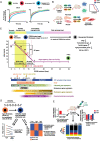Cellular reprogramming and epigenetic rejuvenation
- PMID: 34488874
- PMCID: PMC8419998
- DOI: 10.1186/s13148-021-01158-7
Cellular reprogramming and epigenetic rejuvenation
Abstract
Ageing is an inevitable condition that afflicts all humans. Recent achievements, such as the generation of induced pluripotent stem cells, have delivered preliminary evidence that slowing down and reversing the ageing process might be possible. However, these techniques usually involve complete dedifferentiation, i.e. somatic cell identity is lost as cells are converted to a pluripotent state. Separating the rejuvenative properties of reprogramming from dedifferentiation is a promising prospect, termed epigenetic rejuvenation. Reprogramming-induced rejuvenation strategies currently involve using Yamanaka factors (typically transiently expressed to prevent full dedifferentiation) and are promising candidates to safely reduce biological age. Here, we review the development and potential of reprogramming-induced rejuvenation as an anti-ageing strategy.
Keywords: Ageing; Cellular reprogramming; Epigenetic age; Epigenetic clocks; Rejuvenation; Reprogramming-induced rejuvenation; Transient reprogramming.
© 2021. The Author(s).
Conflict of interest statement
The authors declare that they have no competing interests.
Figures

References
Publication types
MeSH terms
Grants and funding
LinkOut - more resources
Full Text Sources
Other Literature Sources
Medical

